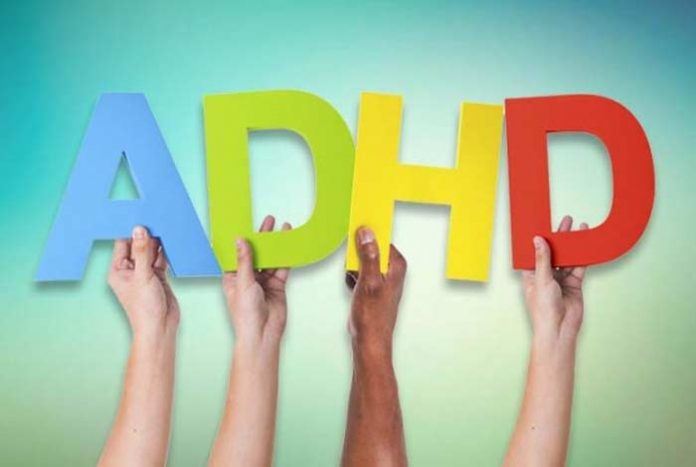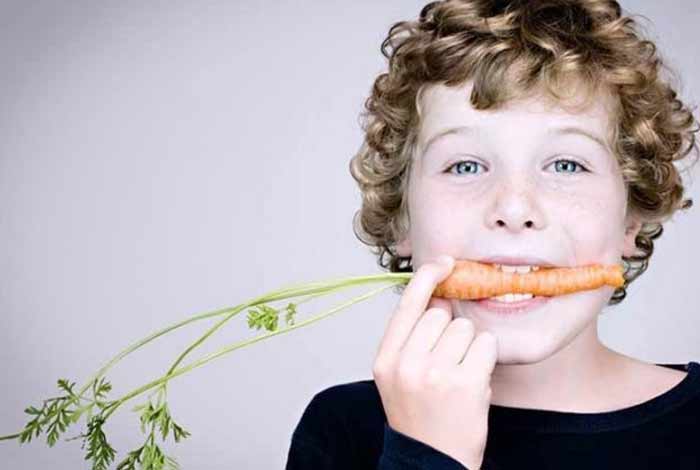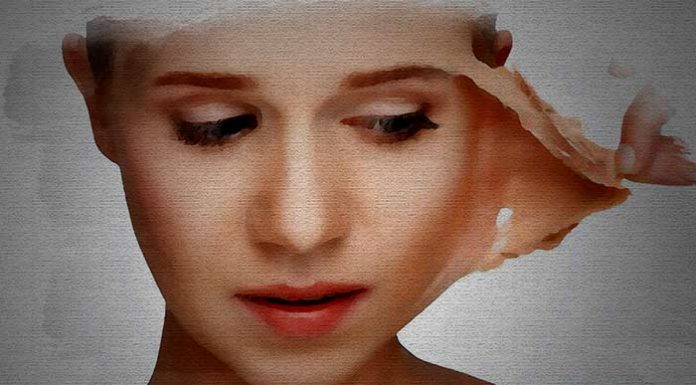
Overview and Facts:
Expanded as Attention Deficit Hyperactivity Disorder, ADHD was previously known as ADD, i.e., attention deficit disorder. Basically, ADD is a type of ADHD that lacks the “H” component, which means those, who are affected by ADD, are not hyperactive. They may be calm, but still, have attention issues. While it a common mental disorder in children, it has been found to affect adults as well. Children with ADHD are active beyond control and face difficulty paying attention. This disorder is marked by not being able to focus, excessive movement and acting without thinking. It starts during school years and more commonly found in boys than in girls. Adults, who are diagnosed with ADHD, have difficulties in managing their time, remaining organized and setting goals, and may face occupational failures. Also, they may face problems in maintaining relationships, have high self-esteem and develop an addiction. Psychiatrists classify ADHD as a neurobehavioral developmental disorder.
ADHD first came to be known in 1902. Sir George was the first to describe ADHD as an abnormal defect in children being unable to control their impulsive actions. The average age of diagnosis is 7 years. Approximately, 11% of American children, aged 4 to 17 years, have been diagnosed with ADHD, according to a report. Percentage of boys diagnosed with ADHD is around 14.2% and girls affected by ADHD is 6.4% as of 2015.
The term ADD is used by North Americans. Hyperkinetic disorder is used in the U.K. ADHD has got nothing to do with “normal childhood excited and energetic behavior.” There is a genetic link up of ADHD with other mental disorders like schizophrenia, bipolar disorder and autism.
Types and Symptoms of ADHD:
1. Types of ADHD:
- Predominantly Inattentive: Because of this type of ADHD, a person is unable to finish tasks. They lack attention to detail, and are unable to follow instructions.
- Hyperactive-Impulsive Type: People with this type of ADHD taps, talks and fidgets a lot. Children can be impulsive and restless. Such people interrupt while others speak, and are often found speaking at inappropriate times.
- Combined Type: This is the combination of inattentive and hyperactive-impulsive type. They share symptoms of both of the above two types.
2. Symptoms of ADHD:
- Get Distracted Easily: The symptoms are based on three categories as discussed above. The three symptoms of ADHD are inattention, hyperactivity and impulsivity. Children with ADHD get distracted very easily. They do not follow instructions and are unable to complete tasks. People with ADHD make careless mistakes at work or during other activities. Symptoms intervene in their social functioning as well.
- Do Not Follow Instructions: People do not tend to listen when being spoken to directly and have trouble completing tasks. They start with the task, but soon lose focus and cannot pull through the task till completion.
- Disorganized: Have difficulties in organizing, arranging things in sequence, with poor management of time and inability to meet deadlines.
- Refrain from Tasks that Require Mental Effort: Tasks that require sustained mental effort like preparing lengthy reports, sitting through homework or reviewing lengthy papers are next to impossible for children challenged with ADHD.
- Think Irrationally: Getting distracted by out-of-nowhere thoughts and having thoughts that are not rational.
- Lose Things: People with ADHD are unable to keep track of everyday stuffs like books, wallet, keys, phones etc. They are forgetful about their daily activities.
- Daydreaming: This condition makes it difficult for the brain to self-regulate. People without ADHD are in a position to snap themselves out of that state. However, when one has ADHD, it is difficult for the person to move from one task to another.
- Move Restlessly and Fidgets While Sitting: A child with ADHD has trouble sitting quietly or playing without disturbance. He/she is always moving and climbing on things.
- Talk Excessively: Children with ADHD talk excessively, speak out of turn, and annoy others as they say the first thing on their mind.
Adult-Specific Symptoms of ADHD:
- Forgetfulness: People may forget, where they have kept the keys or their wallet for that matter. It may hamper their daily routine as they may miss out on important dates. It can damage career and relationships since it can be thought by the other person that the person in question is careless or is not intelligent enough to handle things.
- Anxiety and Low Self-Esteem: A person with ADHD may experience pangs of anxiety and low self-esteem. They may have a poor image of self.
- Hyperfocus: Those with ADHD can sometimes get so engrossed in what they are doing that they become completely oblivious to what is happening around them. This leads to misunderstandings in relationships.
- Fatigue: Because of hyperactivity and sleep problems, fatigue may be seen in people with ADHD. Fatigue may result from the effort required to maintain focus in individuals with ADHD.
Risk Factors of ADHD:
Some childhood risk factors are listed below:
- Premature birth
- Low weight at the time of birth
- Prenatal exposure to tobacco
- Maternal smoking during pregnancy
Socioeconomic Risk Factors:
- Parental history of anti-social behavior and depression
- Single parent household, i.e., child not living with both the parents
- Mother being less educated
- Low social status of the family
- Environmental exposure to lead
Do I have ADHD?
You may have ADHD if your answer is yes to the following statements:
- It is difficult for me to get and remain organized.
- I obsessively think about a particular task that has been assigned to me instead of doing it the right away.
- I am not able to complete most of my projects assigned to me.
- I am impulsive and make decisions hastily without evaluating the pros and cons of the same.
- I am unable to accomplish goals, no matter how hard I try!
- I get easily bored.
- I get distracted while people are talking and seem to tune out.
- I get so engrossed in doing some of the things that it is difficult for me to switch to something else.
ADHD is not a standalone disorder. In fact, more than half of the individuals with ADHD also suffer from other conditions like depression, anxiety, Obsessive Compulsive Disorder (OCD), learning disorders, autism or other psychological and neurological conditions.
It is best to get it diagnosed and consultation must be sought from the doctors for its proper treatment.
Causes and Prevention of ADHD
1. Causes of ADHD:
The exact cause of ADHD is not known. However, a combination of factors is thought to be at play. Genes are responsible for inheriting the disease from parents. If researches are to be believed, parents and siblings of a child with ADHD are four to five times more likely to have ADHD. Some major causes of ADHD are discussed below:
- Environmental Agents: There is a positive correlation between smoking and drinking during pregnancy and increased risk of ADHD in the next generation. Thus, it is advised to refrain from both alcohol use and cigarette smoking during pregnancy. Children, who are exposed to lead, have higher chances of having ADHD. Exposure to toxic environmental substances increases the risk of ADHD.
- Brain Injuries: Attention deficit disorders may also be caused due to brain injuries. Children, who have had a brain injury, may show symptoms of ADHD. However, a very small percentage of children with ADHD are found to have brain injuries in the past.
- Food Additives and Sugary Foods: It has been found that attention disorders may even be caused by food additives or sugar based foods.
- Genetics: Attention deficit hyperactivity disorder (ADHD) may also be attributed to genetics. Studies showed that around 25% of people in the families of ADHD children also had ADHD.
- Brain Development: Brain may develop differently in people with ADHD. The frontal lobe of the brain may develop more slowly as the circuits may be wired differently.
2. Prevention of ADHD:
While nothing much can be done to prevent ADHD, one can follow some tips to regulate ADHD and minimize its risk as much as possible.
- During pregnancy, don’t drink, smoke or do drugs. Follow the orders of your doctor to reduce the chances of preterm labor. You are advised to eat healthy, get exercise, take vitamins, and remain stress-free. A study found that children, whose mothers had smoked during pregnancy, were twice as likely to have ADHD. Also, pregnant women’s exposure to lead can increase the chances of ADHD in the child.
- After a child is born, it is important to feed him/her healthy food. Altering or changing the diet may reduce hyperactive behavior. Ben Feingold, a pediatric allergist, developed a popular diet to reduce hyperactivity. The diet has not been accepted by the medical community, but people following this diet have reported improvements. Sugars and carbs may affect child’s activity by raising blood sugar levels that produce adrenaline rush, which may cause more activity in the child followed by a decline in mood and activity with decreased level of adrenaline. Parents should cut certain foods from their child’s diet if they feel that the same influence their child’s behavior negatively. Make sure not to be too restrictive as far as child’s diet is concerned as it may lead to nutritional deficiencies.
- Children with structured routine can help manage their condition better. Charting out a plan that tells when to wake up, eat meals, play, complete homework, and take part in school activities will benefit children with ADHD.
- Using positive reinforcement when your child behaves well works wonders. It is important to praise and recognize them for good behavior.
Diagnosis and Tests of ADHD:
There is no single test to diagnose ADHD. There are many ways to detect ADHD that are as follows:
- Interview with parents, relatives, adults in the family, teachers.
- Observing the child or adult at a closer level.
- Carrying out questionnaires or rating scales to evaluate the symptoms of ADHD.
- Psychological Tests
The following tests may be prescribed to rule out other conditions:
- Blood tests to measure the levels of lead
- Blood test to detect some diseases like thyroid
- CT Scan or MRI to check abnormalities in brain
Treatment and Care of ADHD:
1. Treatment of ADHD:
- Medication: Drugs may be prescribed to those with ADHD. There are different medications used to reduce symptoms of ADHD that include methylphenidate, dexamfetamine, lisdexamfetamine, atomoxetine and guanfacine, to name a few. These medications may not be able to treat ADHD patients permanently, but can definitely help them feel better, concentrate easily and be less impulsive, and hence, more open to learning new skills.
- Psychoeducation: Apart from taking medicines, therapy may also be useful in treating ADHD in children and adults. One of such therapies is psychoeducation. Educating the child about ADHD and its effects will empower the child. It can help the affected individual live and cope with his condition.
- Behavior Therapy: Another strategy that can be adopted is Behavior Therapy. In this therapy, reward system is used, i.e., the child is rewarded when he/she controls the unwanted ADHD behavior. For example, if a child has ADHD and he/she can’t sit at the table to eat, then you may introduce some reward like taking them to the swings if they exhibit appropriate and good behavior. When he/she shows poor behavior, then mild punishments like removal of a privilege may be used in order to encourage good behavior.
- Cognitive Behavioral Therapy: The aim is to teach self-control through instructions, problem-solving, self-monitoring and self-evaluation. It is about teaching children simple cues that enable them to behave appropriately. For example, the child may be able to say stop to himself when he/she is about to shout out in the class.
- Clinical Behavioral Therapy: The aim of clinical behavioral therapy is to provide training to parents, caregivers and teachers to adopt contingency management programs. An example of effective CBT program for children is the use of a daily-report system, wherein a child receives points for exhibiting some types of behavior.
- Contingency Management: This technique is implemented in specialized type of classrooms. The technique includes rewarding a child with special points to encourage a specific behavior. It helps inculcate some types of behavior in children by using gain or loss of privileges.
- Intensive Behavioral Therapy: The aim of this treatment is to combine clinical behavior therapy and contingency management to boost self-control and improve socialization. Its examples include sending children to a summer camp, where they can engage in group-based activities. They are divided into groups and engaged in a two-hour session of behavioral interventions, during which they are trained to behave in a specific way. In the rest of the time, they involve in some recreational activities. Parents also intervene, and if the child controls inappropriate behavior at home, then they are rewarded.
- Combination of Medicines and Behavioral Therapies: This combination treatment has advantages over medicine or behavioral therapy alone. When medicine is used, then the amount of time spent by parents and teachers on managing behavior through behavioral therapy may be decreased and also, since, behavioral therapy is being used, the dose of medication may be reduced.
Care for People with ADHD:
People with ADHD have more accidents than others. They are more likely to get head injuries, injure more parts of their body, receive injuries while riding a bike or walking. So, they must be observed and monitored more closely than others.
- Make sure that people affected by ADHD wear helmets while biking.
- Ensure they do not come in contact with household chemicals and other toxic substances.
- Be extra careful if they are climbing or near water.
- Distractions increase the chances of accident, so make sure while driving they are not talking over the phone or listening to music.
OTC Medicines and Self-Management Methods:
1. Over-the-Counter Medicines for ADHD:
Adderall is one of the most used prescription medicines for ADHD. But, quite a lot of people don’t like taking them, because these have many side effects like addiction and bad impact on brain health. So, people look out for its substitutes that can be taken according to one’s choice. While an OTC Adderall is illegal, its substitutes are less reliable and have low potential; hence, not recommended.
There are three types of alternatives available to Adderall. These are prescription, nootropics and herbals. One product that can be used to ease the symptoms of ADHD is L-tyrosine, which is an amino acid.
2. Self-Management Methods:
There are self-management strategies that can be used by children with ADHD. These focus on teaching students to rate their own behavior according to ratings given by their teachers or parents. Besides, teachers or parents intervene by checking whether ADHD affected children have met the appropriate criteria and requisite consequences of their behaviors. Also, the children self-evaluate their behavior against the criterion set for performance and behavior. The child administers the consequences by him/herself.
Natural Ways of Treating ADHD:
- Create a Routine: Children with ADHD are naturally drawn to chaos. They must be engaged in activities that are calming and relaxing. A regular schedule should be maintained regarding his/her homework, exercise and eating habits.
- Practice Relaxation: Encourage people with ADHD to do yoga. Let them lie down in Shavasana (corpse pose) and analyze their breathing pattern.
- Massage: Rub your hands using oil and give massage to the affected person.
- Take Care of the Diet and Nutrition: Diets that do not have sugar and chemical additives considerably improve behavior of kids with ADHD.
- Natural Remedies: There are many available herbs that calm and soothe the nervous system. These include St. John’s Wort, lemon balm and skullcap.
- Use Less Technology: Technology not only disturbs attention of children with ADHD but also expose them to electromagnetic radiation at harmful levels. This agitates the nervous system. Thus, it is advisable to use less technology.
Health Tip by Experts:
To find learning techniques and behavioral approaches that work for your child, you need to understand how ADHD affects development.
















